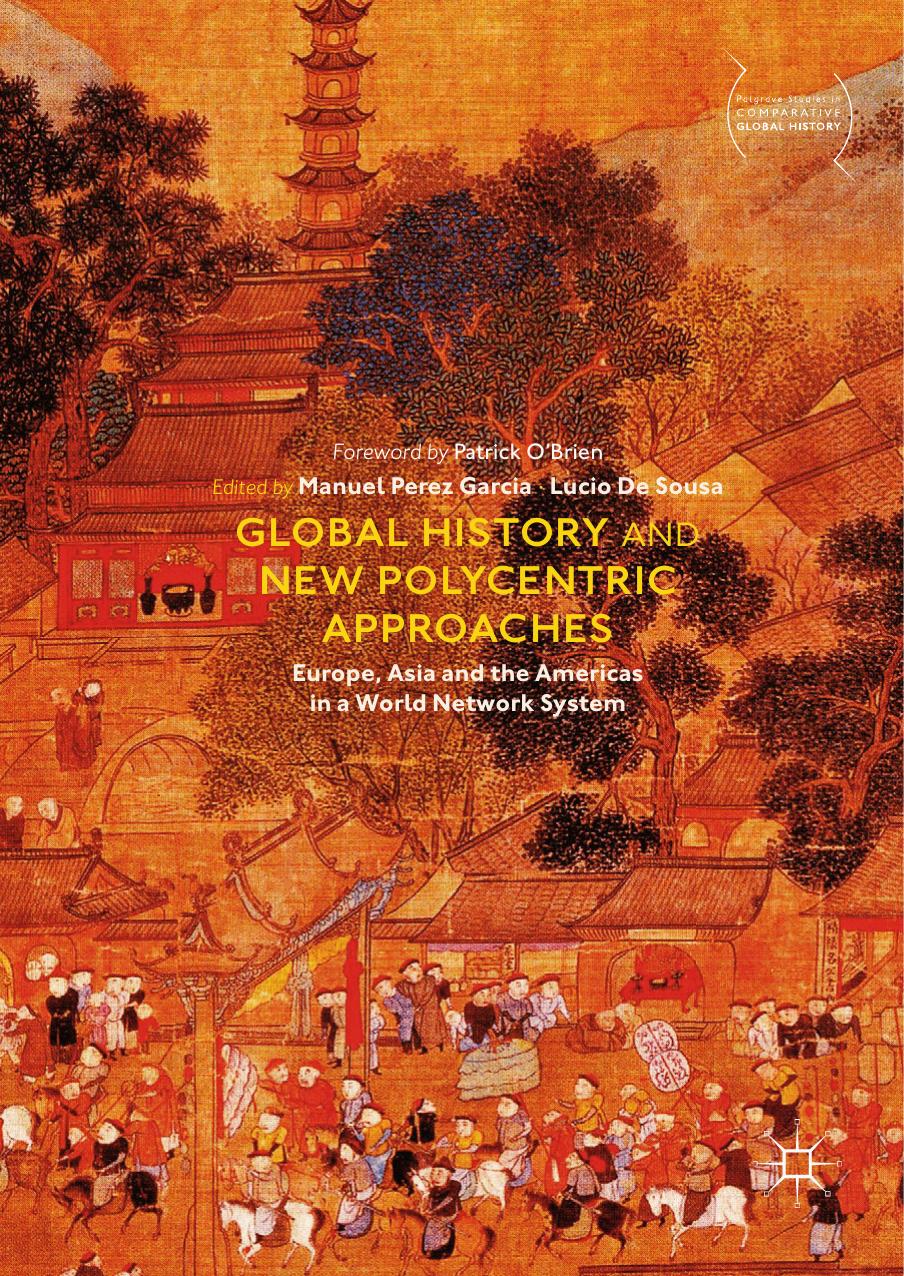Global History and New Polycentric Approaches by Manuel Perez Garcia & Lucio De Sousa

Author:Manuel Perez Garcia & Lucio De Sousa
Language: eng
Format: epub, pdf
Publisher: Springer Singapore, Singapore
7 Early Nagasaki Headmen and Trade
Beginning with the town construction of Nagasaki in 1571, the position of Headman in overall charge of the town was fixed. After Hideyoshi seized the city and appointed Terasawa Shima no kami as Magistrate of Nagasaki, the Headmen were appointed from among the town elders. The town elders at the time were Takagi Ryōka 高木了可 , Gotō Sōtarō 後藤宗太郎 (Sōin 宗印), Machida Sōka 町田宗加 and Takashima Ryōetsu 高島了悦, all Christians, and at the time having already achieved wealth through trade.
Their birthdates and backgrounds were all unclear in the Japanese records, but their ages in 1601 are given in Spanish materials kept at the Mexican General National Archive (De Sousa 2015). According to that source, Gotō Sōin (baptismal name Thomé) was 44, Takagi Ryōka (baptismal name Luís) was 47 and Machida Sōka (baptismal name João) was 45. There is no information given for Takashima Shirobei Ryōetsu (baptismal name Jeronimo). In the same records Machida Sōka (known in Portuguese and Spanish materials as Moro João) was a sea captain from the 1580s sailing between Macao and Nagasaki and also owned a house in Macao. It is unclear if Sōka captained a Japanese ship or a ship within a Portuguese fleet, but at that time many of the Portuguese nanban ships sailing between Macao and Nagasaki had numerous Japanese among their crews, and Sōka is thought to have been in charge of those Japanese sailors (De Sousa 2010).
Gotō Sōin was also a sea captain sailing his own ship to Manila. In the Edo period , he was active in shuinsen trade and received official charters for voyages to Brunei in 1606, and to Siam in the following year (Iwao 1983). Compared with his activities in sixteenth-century overseas trade, there is no indication that Machida Sōka prepared any shuinsen. Takagi Sakuemon 高木作右衛門 (either Ryōka 了可 or the second, Tadatsugu 忠次) sent out a shuinsen in 1616 to the Moluccas (Iwao 1983), and in 1628 a shuinsen of Sakuemon was burned by a Spanish ship while docked in Ayutthaya . 13 The year before that, an official charter for Siam is thought to have also been granted to him (Iwao 1983: 220).
All of these people were Christians with a deep connection with the Jesuits , and are thought to have been certainly influential in the town administration of Nagasaki. 14 With the Edo period ban on Christianity, Takagi Sakuemon immediately abandoned his beliefs, and the Takashima family followed suit. The Takagi and Takashima families maintained their regional control over Nagasaki until the closing days of the Tokugawa government in nineteenth-century.
Among the four original organizers of Nagasaki, Machida Sōka and Gotō Sōin were actual seafarers themselves who were personally familiar with overseas areas. They did not abandon Christianity even after the government ban and were banished from Nagasaki. It is interesting that the Takagi family and the Takashima family, who were not seamen but trading merchants on the land, obeyed the government restriction and continued to play an important role in the Nagasaki administration until the end of the Edo period .
Download
Global History and New Polycentric Approaches by Manuel Perez Garcia & Lucio De Sousa.pdf
This site does not store any files on its server. We only index and link to content provided by other sites. Please contact the content providers to delete copyright contents if any and email us, we'll remove relevant links or contents immediately.
| Arms Control | Diplomacy |
| Security | Trades & Tariffs |
| Treaties | African |
| Asian | Australian & Oceanian |
| Canadian | Caribbean & Latin American |
| European | Middle Eastern |
| Russian & Former Soviet Union |
The Secret History by Donna Tartt(16611)
The Social Justice Warrior Handbook by Lisa De Pasquale(11486)
Thirteen Reasons Why by Jay Asher(7783)
This Is How You Lose Her by Junot Diaz(5755)
Weapons of Math Destruction by Cathy O'Neil(5032)
Zero to One by Peter Thiel(4818)
The Myth of the Strong Leader by Archie Brown(4787)
Promise Me, Dad by Joe Biden(4441)
Stone's Rules by Roger Stone(4413)
Beartown by Fredrik Backman(4406)
How Democracies Die by Steven Levitsky & Daniel Ziblatt(4393)
The Fire Next Time by James Baldwin(4338)
100 Deadly Skills by Clint Emerson(4072)
A Higher Loyalty: Truth, Lies, and Leadership by James Comey(4028)
Rise and Kill First by Ronen Bergman(4009)
The David Icke Guide to the Global Conspiracy (and how to end it) by David Icke(3876)
The Farm by Tom Rob Smith(3870)
Secrecy World by Jake Bernstein(3774)
The Doomsday Machine by Daniel Ellsberg(3726)
